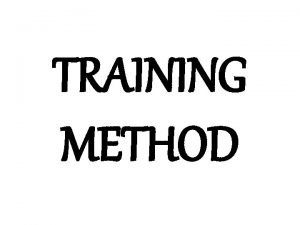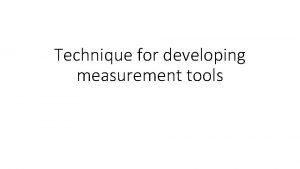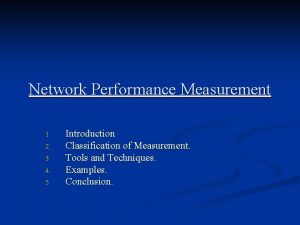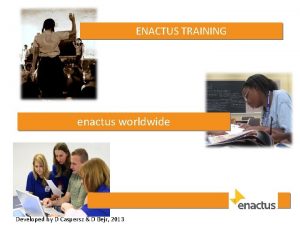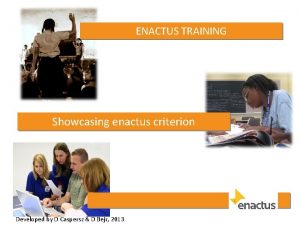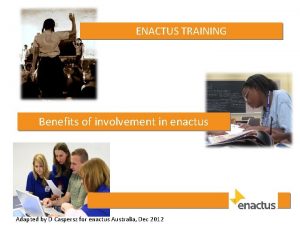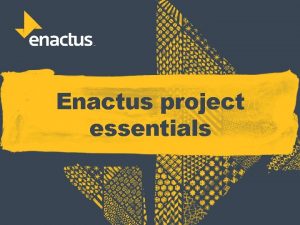ENACTUS TRAINING Measurement Tools Quality of Life Developed









- Slides: 9

ENACTUS TRAINING Measurement Tools Quality of Life Developed by D Caspersz & D Bejr, 2013

Quality of Life is… • Intangible variables regarding human welfare or wellbeing as measured by social indicators. This includes (but is not limited to) factors such as: - self-esteem - overall satisfaction of life - working conditions - ability to care for one’s family - hope in life - acceptance in community, neighborhood and/or work environment

But how do you measure this? Use one of the many tools available to measure the OUTCOMES of the variable (in this case, quality of life)

Variables • Inputs are resources dedicated to or consumed by the program. Examples include but not limited to: money, students, time, volunteers, facilities, equipment and supplies. • Outputs are the direct product of program activities and usually are measured in terms of the volume of work accomplished. Examples include: q The number of classes taught; q counseling sessions conducted; q educational materials distributed; q and participants served. • Outcomes are benefits or changes for individuals or populations during or after participating in program activities. They are influenced by a program’s outputs. Outcomes may relate to behavior, skills, knowledge, attitudes, values, condition, status, or other attributes. They are often illustrated by what the participants know, think, or can do; or how they behave; or what their condition is as a direct result of the program/project.

Participant Observation • Oldest and easiest methods to evaluate a change • How? The easiest is pre and post observation. • Note the old outcome (eg the behaviour, skills or knowledge) on a predetermined measurement scale before the project commences to establish a baseline • Note the new outcome (on the same scale as before) after the project • Compare the before and after outcomes to see if there is a difference, which may be positive or negative

Participant Observation – An Example • Outcome to be measured: empowerment of confidence Predetermined scale: how many times participant offers ideas in discussions • Pre-project observation – participant offers no ideas in discussions • Post-project observation – participant offers 2 ideas (average) in discussions • Difference of +2 ideas in discussions – a positive change in confidence

Tools for Measuring Outcomes These may include, but are not limited to: • Observation • Surveys • Discussions • Semi-structured interviews • Focus groups • Video evidence • Third party reports (ie carers, guardians, teachers etc) • Assessments • Completion of tasks

Quantity • The more times you can show a difference in outcomes, the better quality your results are, as you have shown it is not a one off. • Different tools can be used to collect more results – pair a survey with a focus group, or video evidence with a third party report.

Formal Tools for Measuring Quality of Life • Positive Psychology Questionnaires: http: //www. ppc. sas. upenn. edu/ppquestionna ires. htm • Flanagan Quality of Life Scale, Table 1, http: //www. hqlo. com/content/1/1/60 http: //www. uib. no/isf/people/doc/qol. pd f • Rosenburg Self-esteem Scale: http: //www. bsos. umd. edu/socy/research/ros enberg. htm


